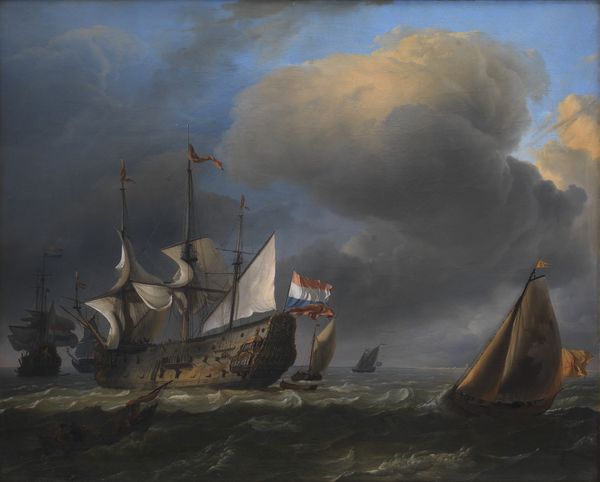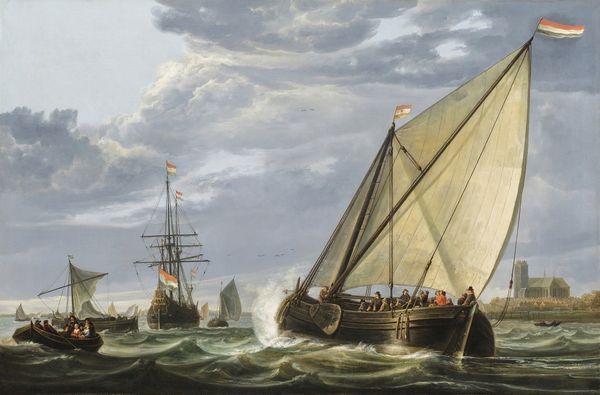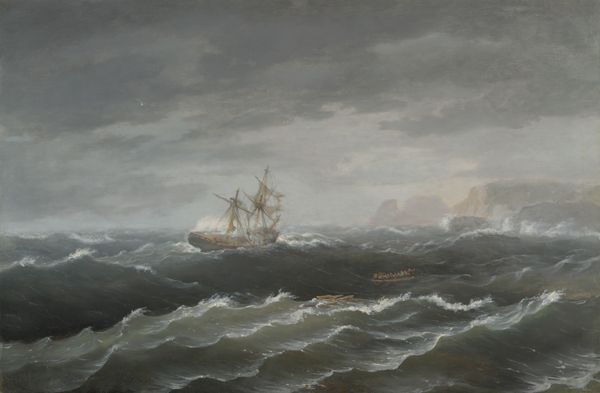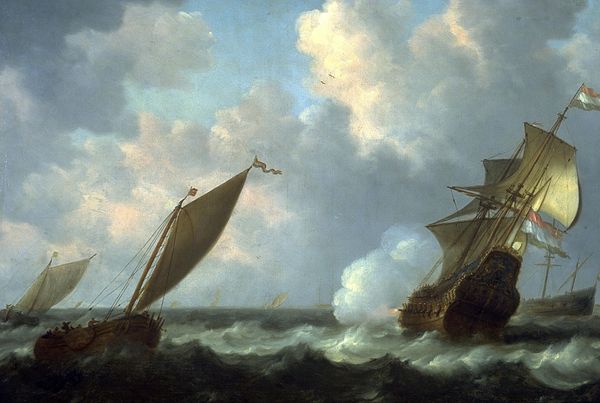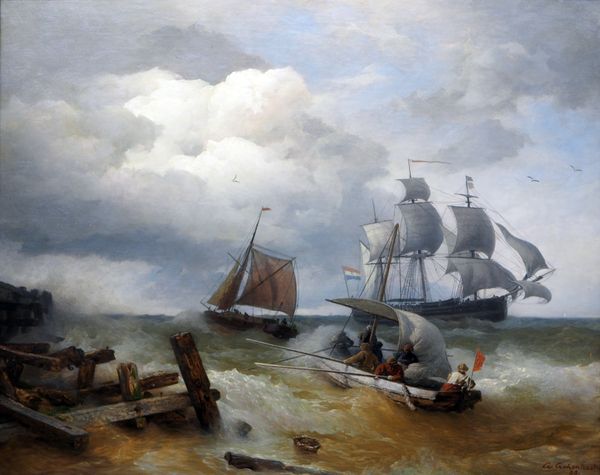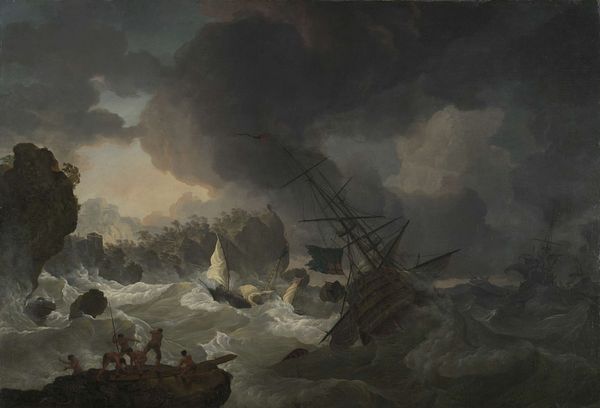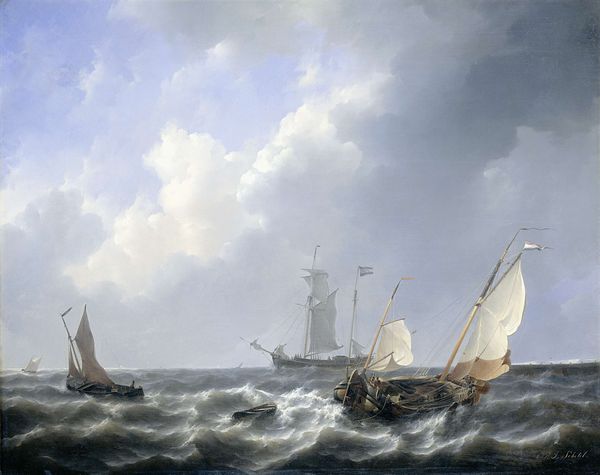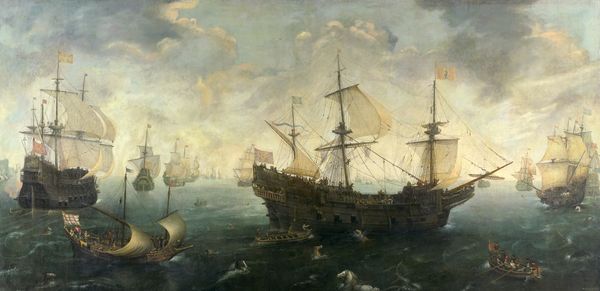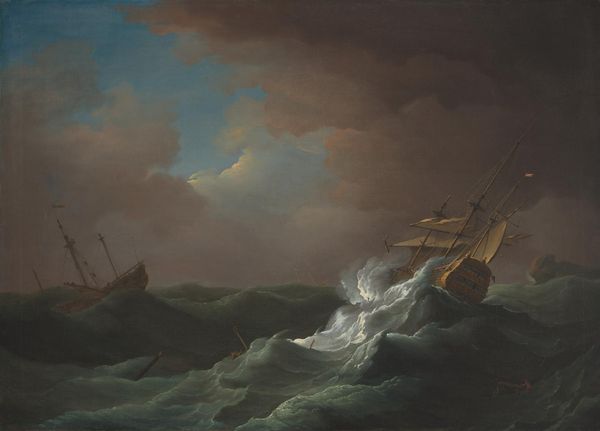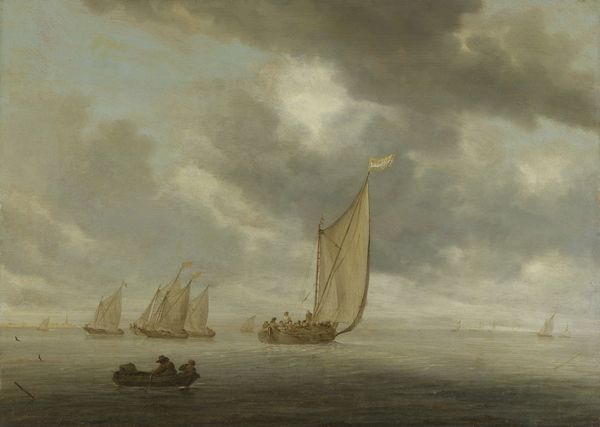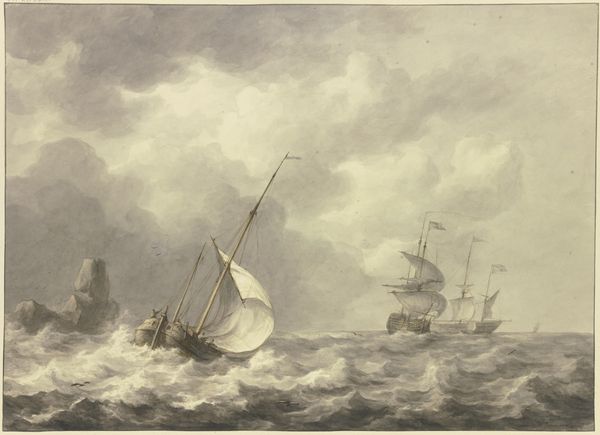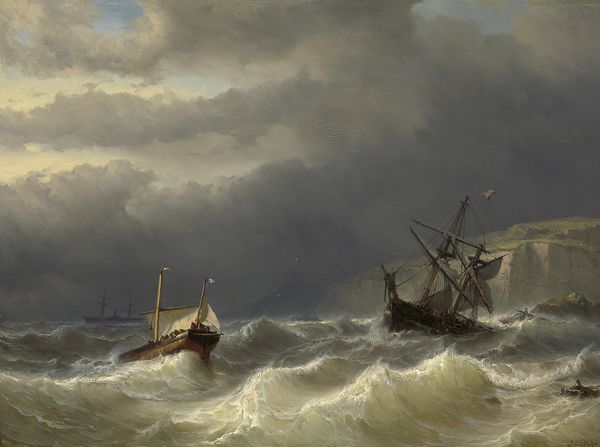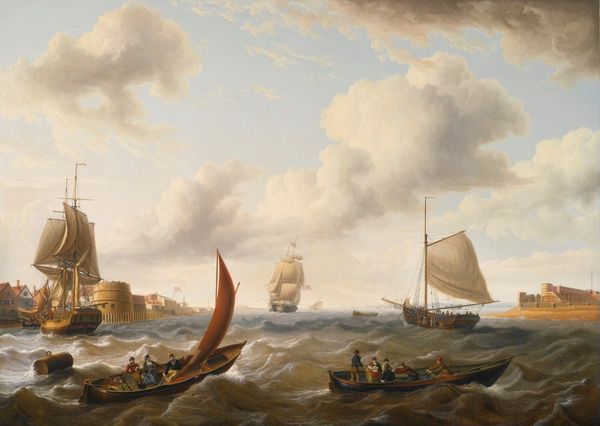
painting, oil-paint
#
narrative-art
#
painting
#
oil-paint
#
landscape
#
romanticism
#
cityscape
#
genre-painting
Dimensions: height 159.6 cm, width 220.2 cm, thickness 4.4 cm, depth 14.4 cm, weight 53 kg
Copyright: Rijks Museum: Open Domain
Editor: Johannes Christiaan Schotel's "Ships in a Turbulent Sea," painted in 1826, certainly captures a dramatic scene! I'm struck by how small and vulnerable the ships appear against the immensity of the stormy sky and the churning waves. How do you see this painting within the context of its time? Curator: It’s vital to consider this work through the lens of the Romantic era's fascination with the sublime. Schotel's dramatic seascape aligns with the artistic focus of emphasizing the power of nature, here made evident by ships buffeted by chaotic seas, in contrast to humanity's limited power. Note also the prominent Dutch flag; can we see this as a political statement? Are these merely genre scenes, or potent national symbols? Editor: I hadn’t thought about the flag's implications! Could this painting also reflect the Netherlands' maritime history and economic dependence on the sea? Curator: Precisely. Maritime paintings gained popularity, fulfilling a civic need to represent the powerful influence of overseas trade and military strength on the growth and maintenance of their place in a global economy. How did these maritime paintings contribute to shaping Dutch identity? And how do paintings of turbulent seas reflect or perhaps deflect attention from the complexities and risks of international commerce? Editor: That gives me a lot to consider. It's more than just a pretty picture of ships; it speaks to larger questions of national identity and economic power. Curator: Exactly. Paintings like this were, and still are, important components of our understanding of history and national narratives, as much as, or perhaps even more than, mere reflections of reality. Editor: I see the artwork with fresh eyes now. It really exemplifies art's active participation in constructing socio-political landscapes, both on a national and global scale. Curator: I think understanding that key dynamic is precisely what studying art history helps us to do.
Comments
No comments
Be the first to comment and join the conversation on the ultimate creative platform.
